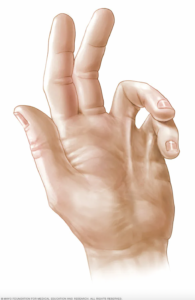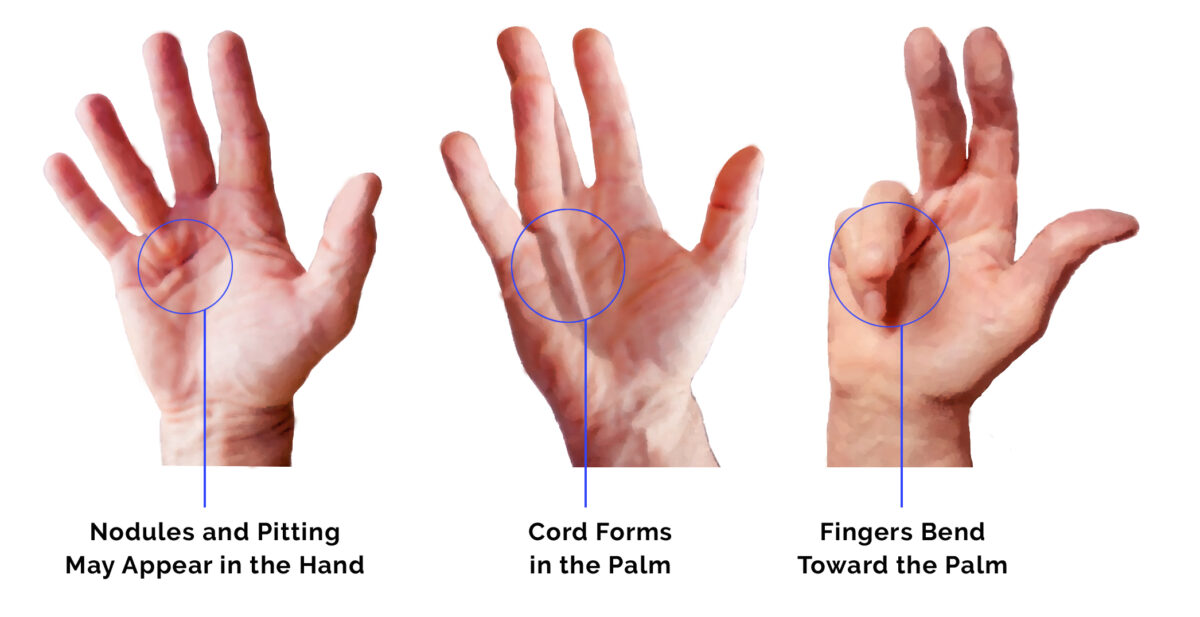The hands are often times the most taken-for-granted parts of our body. It is only when they start malfunctioning that you recognize how compromised your life can become without their full function. One common and crippling hand disease that you’ve never heard of is the culprit for many men and women over the age of 45, and it’s called Dupuytren’s Contracture or “Viking finger.”
Signs of Dupuytren’s Contracture
Also known as Dupuytren’s disease, this condition shows itself with signs such as a tightening feeling in your hands, hand cramping for no apparent reason, and/or the bending of a finger toward your palm. The tightening you’re feeling is in the fascia of your hands. Fascia are fibrous tissues that are located inside the palms of your hands, and progressive tightening can eventually result in difficulty using the hand along with an unsightly, claw-like appearance as your fingers begin to curl inward.
Diagnosing Dupuytren’s Contracture
As you might expect, diagnosis of Dupuytren’s contracture is done by examining the hand. During the examination, Dr. Arora will usually find a tender nodule in the neighborhood of the third or fourth finger in the palm. Initially, this nodule may cause pain, but eventually it will go away as the fingers begin to curl inward.
In order to effectively confirm or rule out Dupuytren’s contracture, a hand doctor such as MI hand surgeon Dr. Arora, will take down your complete medical history to determine if there is anything in your medical background that could be connected with the condition.
If you consume excessive amounts of alcohol or if you have diabetes or epilepsy, you are at a higher risk for Dupuytren’s contracture, although these are simply factors that go hand-in-hand (no pun intended) with Dupuytren’s contracture. The true cause of the condition is not known.
What is known is that the condition appears to be hereditary, it appears more commonly in men than in women, and usually appears after the age of 45. There also appears to be a genetic component but having the genetic makeup that is present in Dupuytren’s contracture sufferers does not necessarily mean that you will develop the condition. Approximately 5% of Americans have Dupuytren’s contracture. In about half of cases, both hands are affected. Interestingly, when the disorder affects only one hand, it is twice as likely to be the right hand.
Treating Dupuytren’s Contracture
If the condition is identified before the fingers start to curl inward, injection of a corticosteroid can relieve the symptoms. It is important to note, though, that this will simply ease the symptoms – it will not halt the progression of the condition.
Occasionally, Dupuytren’s contracture will go away without treatment, but sometimes at some point surgery may be required. Even after surgery, hand function may be limited. This is because removing the diseased fascia is not an easy procedure – the fascia protects a multitude of blood vessels, nerves and tendons, so the hand surgeon has to err on the side of caution.

The Final Word
If you are experiencing any of the symptoms of Dupuytren’s contracture, it is important that you see a competent hand surgeon such as our very own, Dr. Avery Arora a hand surgeon in metro-Detroit, in order to determine if the cause is actually Dupuytren’s disease or due to another condition. You can then work together to agree on a course of treatment, which could include corticosteroid injections, hand therapy, and/or surgery. Although Dupuytren’s contracture does sometimes simply go away without treatment, that is the exception and not the rule.
If you believe you are suffering from this disease, it may be time to get in touch with top MI hand surgeon Dr. Avery Arora. You can schedule an appointment at one of his four offices in West Bloomfield, Warren, Macomb, or Howell, Michigan.













